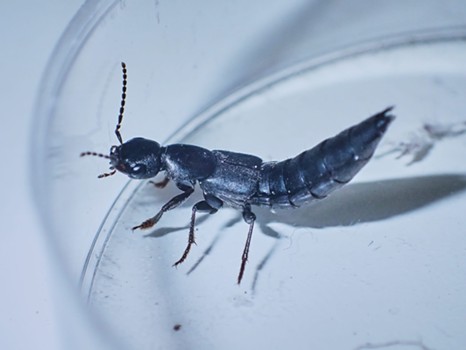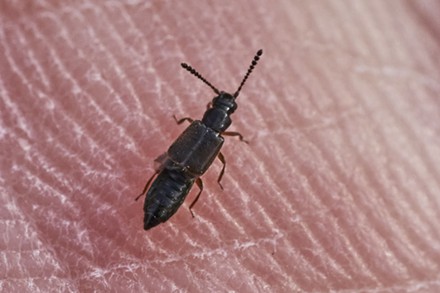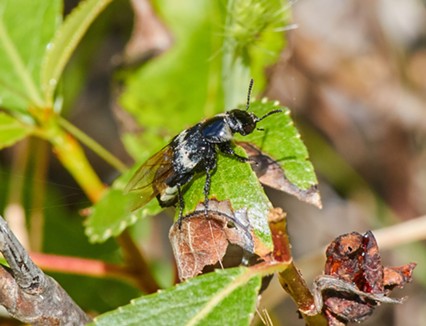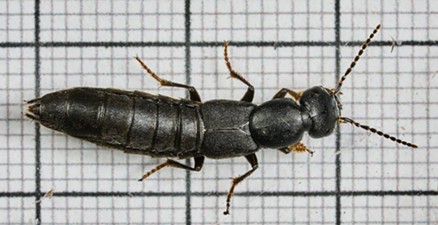News Blog
HumBug: The Devil's Coach Horse

- Anthony Westkamper
- Almost certain this is the Devil's coach horse beetle.
It is a rare event that I go out looking for a particular species of insect and find it. Well, for once I succeeded.
A week ago on one of those sunny-ish days I took a walk down the Van Duzen River and noted dozens of tiny flying insects. I chased a couple down and grabbed them right out of the air. As I opened my hand expecting to see an unidentifiable smear, I found a perfectly healthy, tiny rove beetle. For the most part you can identify them by the fact that their elytra (wing covers), don't cover much of their abdomen, but they are usually good flyers. Although they are harmless, when stressed they often raise their tail over their backs like a threatening scorpion. Some species might emit insect sized doses of something unpleasant, which is totally insignificant on our scale.

- Anthony Westkamper
- Tiny rove beetle caught out of the air (probably making me look like a loon to any onlookers). You can tell how small it is relative to my fingerprint ridges.
A little research told me they are the largest family of beetles in North America, estimates from my sources varying between 2,900 and 3,100 species. Although common, they are seldom noticed since most of them live lives of seclusion in leaf litter or under rocks. Many species are attracted to carrion but usually just to feed on the other insects that dine on it. Some eat fungi or decaying leaf litter.

- Anthony Westkamper
- The hairy rove beetle resembles a bumblebee in flight.

- Anthony Westkamper
- The devil's coach horse is nearly an inch long (bold lines are 10 millimeters apart.
Comments
Showing 1-1 of 1